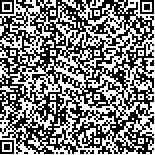下载中心
优秀审稿专家
优秀论文
相关链接
首页 > , Vol. , Issue () : -
摘要

自二十世纪六十年代以来,遥感科学与技术一直是世界大国竞相发展的高科技领域,已成为人类开展地球系统科学研究和多领域空间信息综合应用的核心技术手段。近年来,以深度学习为代表的人工智能技术也引发了数据驱动的遥感数据分析与应用新范式,“遥感科学与技术”也正式成为我国研究生教育交叉门类一级学科。在此背景下,深入探讨遥感科学的内涵与基础性问题显得尤为重要。本文从遥感科学的物理学本源出发,即地物与电磁波相互作用并在特定条件下形成遥感电磁波谱图像,将遥感科学的基本理论问题归纳为辐射、光谱、时相三大特性和尺度、大气、角度、邻近、传递五大效应,前者是由于地物自身理化学特点在电磁波谱上表现出的固有特征,而后者是在成像尺度、大气条件、观测角度、背景环境、遥感器成像机制等不同观测模式与条件下形成的地物遥感特征表达及其变化规律。对遥感科学的内涵与基础性问题的梳理与讨论,有助于在人工智能蓬勃发展的大背景下深化和促进遥感科学基础理论研究,进一步推进遥感信息获取、处理与应用技术的创新发展,并持续推动遥感与其他学科领域的深度交叉融合。
Background and Significance: Since the 1960s, remote sensing science and technology has emerged as a competitive high-tech field, with major countries striving to advance their capabilities. It has become a fundamental tool for human research in the earth system science and the comprehensive application of aerospace information across multiple domains. Recently, two significant developments warrant attention: First, in 2022, the Ministry of Education of China officially recognized "Remote Sensing Science and Technology" as a first-level interdisciplinary discipline within the graduate education framework, thereby strengthening foundational research in remote sensing and broadening its application areas. Second, the rise of artificial intelligence technologies, particularly deep learning, has ushered in a new paradigm for data-driven analysis and application of remote sensing data. While remote sensing fundamentally belongs to the domain of electromagnetic radiation physics, the associated physical models have been indispensable for the development of quantitative remote sensing. Nevertheless, the data-driven deep learning paradigm has introduced transformative ideas and methodologies to the field. Moving forward, the synergy between physical models and artificial intelligence will undoubtedly shape the future trajectory of remote sensing research and applications. In this context, a deeper exploration of the core concepts and fundamental issues in remote sensing science is crucial for achieving significant technological breakthroughs and scientific discoveries within this discipline. Method: This article begins by examining the physical origins of remote sensing science, focusing on the interaction between ground objects and electromagnetic waves, which produces spectral radiation images under specific conditions. It explores the characteristics of various remote sensing methods across the electromagnetic spectrum, including solar reflected radiation in the visible to shortwave infrared remote sensing, daylight-induced chlorophyll fluorescence (SIF) remote sensing, laser remote sensing, both medium and longwave infrared remote sensing, and microwave remote sensing. The fundamental theoretical issues in remote sensing science are categorized into three primary characteristics: radiative, spectral, and temporal characteristics, along with five major effects: scale, atmospheric, angular, adjacent, and transfer effects. The former pertains to the intrinsic physical and chemical properties of ground objects within the electromagnetic spectrum, while the latter relates to factors such as imaging scale, atmospheric conditions, observation angle, and background environment. This discussion includes the expression and variation patterns of remote sensing features of land objects formed under diverse observation modes and conditions. Conclusion: The radiative characteristics reflect overall difference in term of radiation across different electromagnetic bands for various land covers, closely tied to geophysical and chemical properties. The spectral characteristics of land cover manifest as variations in the intensity of reflected and emitted signals with wavelength, highlighting significant differences in absorption, reflection, and emission behaviors among different materials, known as "spectral" characteristics. Temporal characteristics pertain to the systematic changes in spectral reflection or emission over time, aiding in remote sensing identification or feature inversion of land cover. The scale effect refers to the changes in remote sensing observation characteristics due to variations in pixel area size, influenced by spatial resolution or point scanning density (e.g., laser scanning spot density). The atmospheric effect describes how electromagnetic waves are impacted by the absorption, scattering, and emission from atmospheric particles during remote sensing imaging, leading to radiation distortion in image data. The angular effect highlights the directional nature of the interaction between land cover and electromagnetic waves, resulting in significant anisotropic characteristics and variations in radiation values based on the angles of incident radiation, remote sensing observation, and electromagnetic wave wavelength. The adjacent effect refers to the influence of spatial structure heterogeneity among land features, which can create cross-radiation contributions from non-target pixels to target pixels, dependent on spatial distribution and remote sensing observation mode. Finally, the transfer effect encompasses the changes in imaging quality after the electromagnetic signal of the ground objects entering the remote sensing system, including the processes such as photoelectric conversion, signal transmission, and digital recording. Outlook: The review and discussion presented in this article on the fundamental issues of remote sensing science aim to deepen theoretical research in the field, particularly in the context of artificial intelligence. This exploration is intended to foster innovative methods in remote sensing technology and applications, promote the collaborative evolution of AI for Science and Science for AI in remote sensing, and encourage profound cross-disciplinary integration between remote sensing and other fields.

